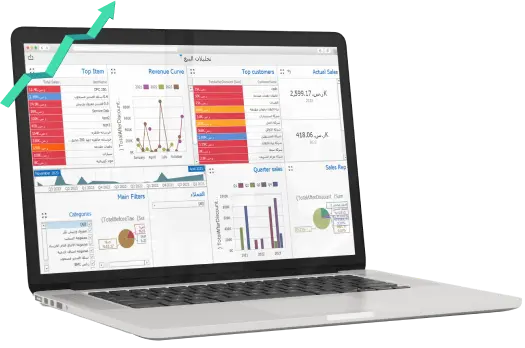The only true indicator of your company's financial health is the balance sheet. This statement analyzes your business from three different angles and helps you understand your ability to withstand things like opening new branches or hiring more employees. The balance sheet is considered one of the most important financial statements in any organization's accounting department. It provides a detailed breakdown of the company's financial position, offering a clear picture of the company's book value.
What is a Balance Sheet?
It's a collection of reports and data reflecting a company's financial وضعیت (waḍʿiyyah, meaning "condition" or "situation") during a specific period. Typically included in the first part of quarterly, semi-annual, or annual financial statements, the balance sheet lists the company's assets, liabilities, and shareholders' equity, providing a clear picture of the company's financial strength.
Here's another way to define a balance sheet: It's one of the most crucial financial statements for a company, encompassing assets, liabilities, and capital within a specific timeframe. The balance sheet is a prominent financial tool used in the business sector, as it portrays the true picture of:
- Shareholders' equity
- The company's liabilities or debts
- The company's owned assets or possessions
In essence, the balance sheet is a snapshot of any organization's financial position for a specific period, whether quarterly, semi-annual, or annual. To determine the true financial health of the organization, the following equation must be applied when preparing the balance sheet:
Assets = Liabilities + Shareholders' Equity
This equation explains what an organization must pay for anything it owns (assets) through borrowing money (liabilities) or taking money from investors (shareholders' equity and ownership).
The number representing assets must be equal to the sum of the organization's required liabilities and shareholders' equity and capital. Consequently, a balance sheet should always be balanced in its core components. If there's no balance, it might indicate issues within the balance sheet, potentially inaccurate data, incorrect financial data transfer, inventory errors, or other problems.
What are the Elements of a Balance Sheet?
The balance sheet consists of three fundamental elements that ultimately clarify the data management needs from this financial statement. These elements include:
1. Assets
This is the first element on the list, representing all the resources the company owns that can be converted into cash later. Assets are further divided into different categories:
- Current Assets
These include cash and holdings that the company possesses and can be easily converted into cash within a year. They are a significant indicator of the company's financial health because they are used to cover short-term liabilities for the company's operational activities. If a company experiences a decline in its net current assets, it signifies a need to acquire additional funding sources for its operations.
One potential solution companies might resort to is issuing additional common stock. Generally speaking, the higher a company's net current assets, the better its chances of sustaining growth for its activity. Some of the most important current assets for companies include:
-
Inventory
-
Cash and equivalents
-
Short-term investments
-
Accounts receivable
-
Other current receivables
-
Non-Current Assets
These are assets owned by the company that require more than a year to convert into cash, or assets the company owns that it doesn't plan to convert to cash within the next year. Non-current assets include the company's fixed assets:
- Machinery
- Land
- Buildings
- Furniture
Non-current assets are sometimes referred to as tangible assets because the company needs them continuously for its operations. The importance of the size of a company's non-current assets depends on the specific sector it belongs to. For instance, service companies generally don't require significant non-current assets unless they manufacture products.
- Intangible Assets
These are assets the company owns in an intangible, non-physical form, such as brand reputation, trademarks, intellectual property rights, and so on.
2. Liabilities
Liabilities, or debts, are the second most important element for an organization in the balance sheet. They are categorized as either short-term (current) liabilities requiring repayment within less than a fiscal year, or long-term (non-current) liabilities with a repayment period exceeding one fiscal year.







